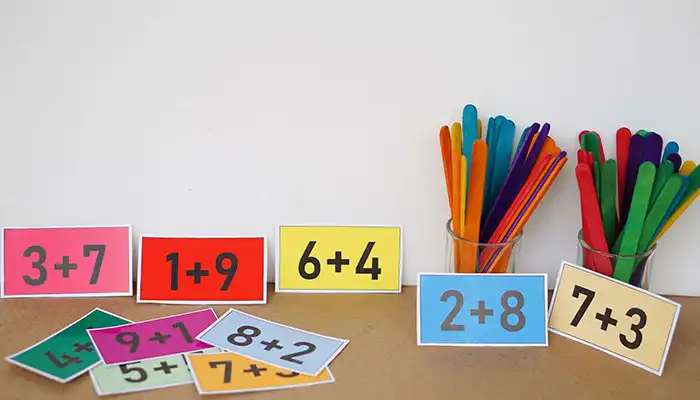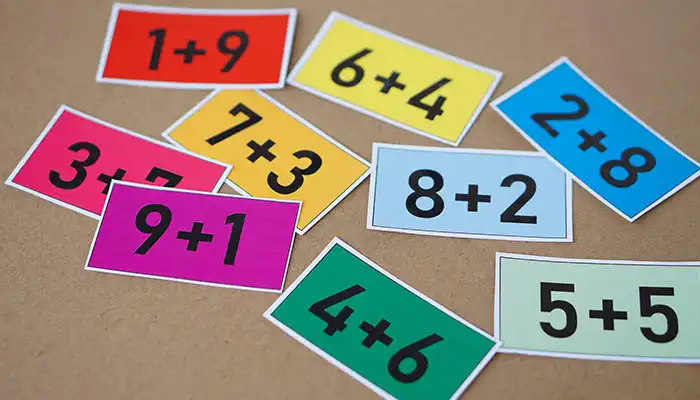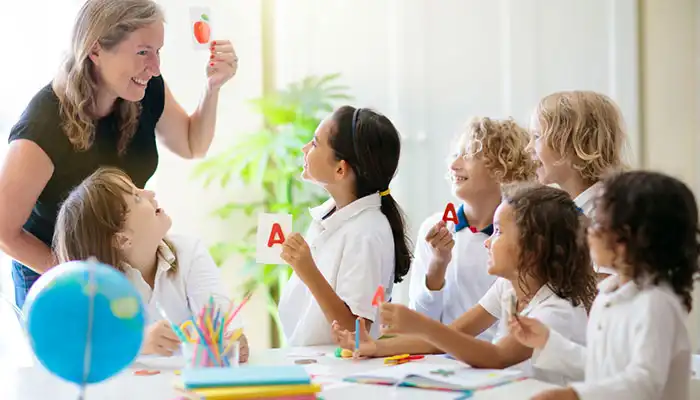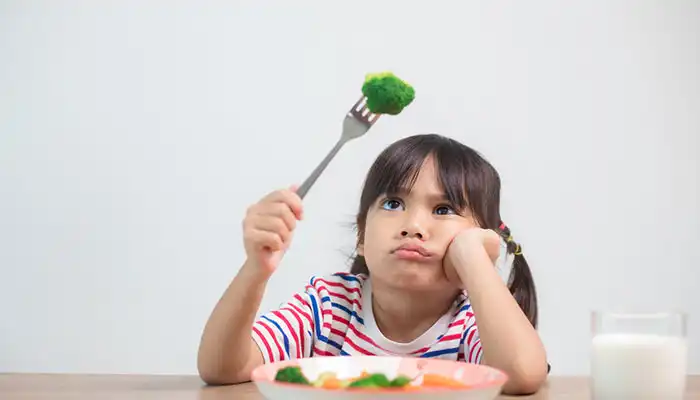Kickstart Emotional Learning with Printable Emotions Flashcards for Young Children
Printable feelings flashcards for preschoolers are more than just learning aids for children – they provide access to an emotional vocabulary. If you’re a parent or educator, you’ve probably asked yourself: ‘How do I teach my child to recognise and regulate their emotions?’ You’re not alone – this is a common question that many of us face as we raise children and support them through the early years.
Why Emotional Literacy Matters for Young Children
Parents know how important it is to teach young children about emotions. Emotional literacy, the ability to identify, understand and express our feelings in appropriate ways, paves the way for social and emotional well-being. Resources such as printable flashcards on emotions for toddlers can support children to master this complex process and make it easier, more enjoyable and stress-free.
So what? Well, suppose a group of children cannot name their emotions; they are frustrated, but can’t voice it, neither to each other nor to their teachers, and the teachers are frustrated as well. Then suppose a young boy cannot communicate to his parents why he’s feeling the way he is. On these and a host of other grounds, emotional literacy matters. When children can name their feelings, they’re better prepared to deal socially with others and to feel empathy for them.

Why Use Printable Emotions Flashcards?
Printable emotions flashcards for children are useful for teaching children to recognise their emotions: Why are they so useful?
- Visual Learning: Kindergarten children are visual learners. Flashcards with these expressive faces helps them associate words with feelings.
- Flashcards aren’t meant just for rote learning: Use the experience to play games, discuss concepts or involve interactive activities. • Pair your learning with experience: Practise what is learned in real-time, during the insurance negotiations or while having that difficult conversation with your partner. • Apply emotional lexicon: Discuss the feelings that arise during each session, their nature, causes and best resolutions. Achieving fluency with words brings emotional intelligence into our everyday interactions.
- Portable and Flexible: Whether at home, in the classroom or on the go, flashcards are easy to carry and can be used whenever the teachable moment arrives.
Example
I recall one preschool teacher using such flashcards in morning circle time: she held up a sad face and asked: ‘When do you all feel like this?’ ‘When Grandma stayed in a hospital’ ‘When I can’t find my rocket doggie’ Feeling charts elicit conversation and a sense of solidarity, giving kids permission to talk about their emotions.
Types of Printable Emotions Flashcards
When it comes to printable emotions flashcards for preschoolers, all bets are off: you can have your pick of styles for varied learning environments and taste.
Cartoon Illustrations vs. Real-Life Images
Illustrations that exaggerate the emotion for cartoons are also good for children, who can easily recognise the emotion depicted. In short, there are many intelligent ways that cartoon characters can actively communicate emotions to viewers when words are not used. Interestingly, seemingly laughable situations such as characters lying down next to each other who wasn’t male and female, or a Scotsman speaking in English with a Scottish accent are not always silly but can impart serious information.
- Real-Life Images: Real-life images work well with a slightly older preschool audience, or with the kids who need a little more challenge. Using real-life images are a great way for them to relate the emotional expressions to real world situations.
Simple vs. Detailed Flashcards
- Simple Flashcards: They tend to focus on one emotion per card, which makes them a good choice for toddlers who are just beginning to learn about feelings.
- Detailed Flashcards: With more elements such as the name of the emotion, a picture of an emotion-evoking scenario or even colour-coding, these could be good for more advanced students.
Customizable vs. Pre-Designed Flashcards
- Customisable Flashcards: Make your own flashcards tailored to your child’s situation: nature specific children’s pictures or scenarios that work best for your child.
- Pre-Designed Flashcards: There are a lot of templates available online that you can print off or that have been designed to be cut out. They are ready to use straightaway and, as a bonus, a lot of them are very well designed so when you look at them they are very clear and straightforward.
How to Effectively Use Emotions Flashcards at Home and in the Classroom
The way you use printable emotions flash cards for kids is an important factor when you want your children to learn how to convey their emotions. Take a look at this simple recipe to get started.
Step 1: Introduce the Flashcards
Begin with your flashcards, one at a time. Choose one emotion to focus on at a time (eg, happiness), and talk about it with your child or students. Ask questions such as: ‘What makes you feel happy?’ or ‘Can you make a happy face?’
Step 2: Create a Routine
Your lingo should be consistent. Include the flashcards in your morning routine, during circle time or at bedtime, or even during dinner to reflect about the day.
Step 3: Make It Interactive
Engage the children by turning the flashcards into a game. For example:
- Emotion Matching: Spread out the cards and have the child match them with their own faces.
- Storytelling: Flip through your flashcards as inspirations for stories. There was once a little girl who was feeling very… (turn over a card). I wonder why she feels that way?
Step 4: Encourage Emotional Expression
Use them as a jumping-off point for discussions: if your child picks a sad card, ask if they’ve ever felt that way and why. It can help them to express their emotional lives more freely.
Example
One mum told me that they played with the flashcards at mealtimes. Everyone in the family in turn picks a card and says something that happened to them during the day that might lead them to feel the emotion on their card. It was a bit of game, but it quickly became a treasured family ritual and was a way of staying in touch, emotionally, when times were hard.
Emotions Flashcards as a Tool for Social-Emotional Learning
Printable emotion flash-cards for preschoolers are not just about labelling emotions, they are part of Social-Emotional Learning (SEL). SEL is about forming positive relationships and learning to regulate emotions. It involves developing skills such as recognising and managing emotions, setting positive goals, feeling and showing empathy, establishing and maintaining positive relationships, and making responsible decisions.
Integrating Flashcards into SEL Programs
Flashcards could be used alongside other SEL activities, such as role-playing, group discussion, or even creative activities like art projects that investigate emotions.
Example Activities
- Act out emotion Charades: Use the flashcards to play a game of charades and children act out the emotions.
- Emotion Journals: After the conversation, children draw or write about when they’ve felt each emotion.
Where to Find High-Quality Printable Emotions Flashcards
You could find yourself asking: ‘Which is the best printable emotions flashcards for toddlers online?’ Well I am pleased to say that you won’t be disappointed on the choices you have.
Recommended Websites and Platforms
- Twinkl: A fantastic resource for high-quality, teacher-created flashcards.
- Teachers Pay Teachers: Free and paid flashcards, designed by teachers.
- Scholastic: Known for its educational materials, Scholastic also offers printable resources for emotional learning.
Free vs. Premium Resources
Premium flashcard offerings aside, free ones exist by the thousands, tend to be good, and are often adequate A premium flashcard may have more heavily designed flashcard pages, straightforward customisation options or inclusion of materials such as lesson plans or activity guides.
Creating Your Own Printable Emotions Flashcards
You can find printable emotions flashcards for preschoolers online, or make your own. A printable set allows you to customise the flashcards to your child’s or students’ needs and desires.
Step-by-Step Guide
Choose your tools: Canva, PowerPoint or even Word can be fine for designing your flashcards.
- Choose images: Use clear images that convey a feeling. These can be your own photos, stock images or just a simple drawn cartoon.
- Paraphrase: While many cultures have multiple terms for our basic emotions, such as sadness and happiness, the Welcome system also identifies subtleties that are harder to name. Simply having an emotion doesn’t mean you know its name. One way to take the bottleneck away is to give people recognisable words. In the Welcome system and its successor, Radical Empathy, individuals express the name of the emotion along with a short sentence contextualising the feeling: I feel sad when Nina ignores
- Print and Laminate: Once designed, print your flashcards and laminate them for durability.
Example
One teacher made tailored flashcards with pictures of the class and different facial expressions to accurately portray their moods. They could see themselves in the learning materials and it made the kids more motivated.

FAQs About Printable Emotions Flashcards for Young Children
You might be wondering a few things as you are beginning to use our printable emotions flashcards for toddlers and preschoolers. We have answers for you below.
How Many Flashcards Should I Start With?
- Start small: start with 5-7 basic feelings such as happy, sad, angry, surprised, scared, etc, then increase the number as your child becomes more comfortable.
Can Flashcards Be Used with Toddlers?
Absolutely: toddlers might not get it to start with, but using flashcards with clear, exaggerated facial expressions might help them start to associate expressions with emotions, and then copy them.
How Often Should We Use the Flashcards?
- Daily is Optimal: Apply consistently. Utilise the flashcards daily, even if it’s just for a few minutes, to reinforce emotionally based learning.
Wrapping Up the Learning Experience with Flashcards
Emotions flashcards that you can print and take with you can revolutionise the way you teach emotional literacy to children: they can be used simply, effectively, and integrated into home and classroom situations with minimal effort. Regular use of emotions flashcards not only teaches children to identify emotions for life, it gives them the tools they need to become emotionally intelligent, socially successful individuals.
With the right design and investment of time, these cards could transform the way in which children aged five and under use language to discuss and process their feelings. Why not check out some printable emotions flashcards for young children, and see how much richer and fuller your children’s emotional vocabulary becomes?
Enhancing Emotional Learning with Printable Emotions Flashcards for Young Children
Now, let’s look more closely at how taking the plunge with some (free!) printable emotions flashcards for kids can help transform emotional learning at home and in the classroom. By now, you might have surmised that these little low-tech tools really do pack a big punch when it comes to emotional learning for kids.
Taking Emotions Flashcards Beyond Basic Recognition
You have your free printable emotions flashcards for kids. Great start. Now let’s move on.What else can you do, beyond teaching your child the basic vocabulary of emotions? How can you build your child’s emotional intelligence further?
Connecting Emotions to Real-Life Scenarios
Children are much better able to retain things when they have a hold on relating them directly to their own lives. After using the flashcard, ask your child to recall a time they felt this way: What do you remember happening? What made you feel that way? What might you say to the person who upset you about it? What does it mean to be nice? What does it mean to be tough?
- “When did you last feel this way?”
- “What happened that made you feel [emotion]?”
- “How did you handle that feeling?”
Using Flashcards in Everyday Situations
Just as you wouldn’t wait until flashcard time to talk about how you’re feeling, you shouldn’t reserve the task of using flashcards just for flashcard time. Every time your child is having a tough moment, use the flashcard as direction for a conversation, reminding them that how we feel is what defines us because it’s completely natural.
Example
One of my friends keeps a set of printable emotions flashcards for toddlers in her handbag: when her child is starting to get too worked up in a public place, she reaches for them and asks her to choose an image that represents how she feels. This is a quick, effective way of calming her down and processing her feelings wherever she is.
Integrating Flashcards with Other Emotional Learning Tools
Taking the focus away from flashcards for just a moment, might I suggest incorporating other emotionally engaging learning activities to help establish flashcard learning? Here are a few ideas:
Emotion-Themed Books
Match the flashcards with books that are about emotions. After reading a book about a sad character, play with the flashcards to talk about the character’s feelings and connect them to your child’s experiences.
Art and Craft Activities
After talking through each emotion, encourage your child to draw or otherwise ‘spell’ that feeling by making a craft project about it, such as after using a ‘happy’ flashcard, encourage your child to draw something that makes him or her happy. This serves as a way to reinforce the lesson and give your child another medium through which to express him- or herself.
Role-Playing Games
Use the flashcards as triggers for dramatisation scenarios. Stage basic mini-situations such as ‘What would you like to do if your best friend pinches your toy?’ and let your child act out how to reply. This is a safe environment for him to practise emotional responses.
Addressing Challenges with Printable Emotions Flashcards
No tool is perfect: chances are you’ll be able to find some reasons why the printable emotions flashcards for young children won’t work for you. Here are some common roadblocks – and how to overcome them.
My Child Isn’t Interested in the Flashcards
Some children won’t be interested at ‘flashcard time’ the first time around, so make it more fun by doing it as an activity or a game. Let your child choose which cards to talk about or mix it up with an activity you both like to do, such as drawing or storytelling.
My Child Gets Confused Between Similar Emotions
Some emotions may be easily distinguishable from others while others can be more difficult for young children to differentiate. ‘Angry’ can be confused with ‘frustrated’, or ‘surprised’ with ‘startled’. Use real life examples or examples from a child’s own short life to differentiate between them. Or ask your child to place the flashcard on a feelings thermometer, helping him to realise that emotions live on a continuum.
FAQs: Printable Emotions Flashcards for Young Children
How Can I Make the Flashcards More Engaging?
Introduce sensory aspects. You could make the flashcards textured; you could also link them with physical actions. If your flashcard is saying ‘busy’, possibly because you have been teaching ‘excited’ and ‘calm’ beforehand, might it be even more fun to do a few jumping jacks to represent ‘excited’? The more senses are involved, the more grasping happens.
Are Flashcards Effective for All Children?
Most children do, but every child is different. Some may respond better to other emotional literacy tools, such as books or games – or they may just prefer plain old conversation. Adapt the approaches to your child’s needs.
How Do I Know if My Child Is Learning from the Flashcards?
Watch for him to begin to use words and concepts that you’ve discussed with him throughout the day. You might notice that he is trying to identify one of his emotions on his own or using some of the words you’ve taught. It will probably take some time, but keep working with the flashcards and he’ll eventually catch on.
Customising Flashcards for Maximum Impact
Yet one size does not fit all, especially not where emotional learning is concerned. Repurpose these printable emotions flashcards for kids by customising them to be more engaging to your child.
Personalise the Images
You can just use photos of your child or someone else they know well doing various things – happy, sad, jealous, frustrated – to make the flashcards more interesting because your child will recognise the familiar faces. In fact, you can let them act out the emotions and use the photos of your child on the flashcards.
Add Contextual Scenarios
Next to a core emotion, provide a short vignette on the back of the card: for instance, a ‘happy’ flashcard might picture a child petting a dog with the caption: ‘I feel happy when I play with my dog.’ This will help your child contextualise the spots where an emotion might show up.
Conclusion?
Nope, Just Keep the Learning Going!
Now you have your printable flashcards for emotions for toddlers and pre-school children, and a word list of pathways to use the flashcards. But it’s time – time to apply on a regular and creatively endless basis. Each application into everyday practise will provide the constructive, potent brand to your child’s learning.
But the point is to make emotional learning a part of your child’s life, one fun lesson along the way. Experiment with feelings flashcards, and keep experimenting. And wherever you go, whatever you do, you’ll have an emotional education at your fingertips. Your little learners will be better equipped for life, and their teachers and fellow students will all benefit, too.



